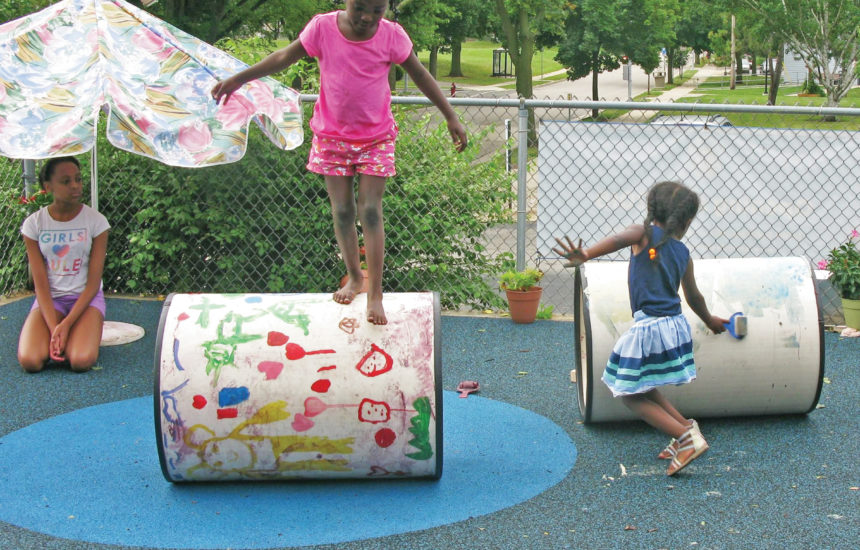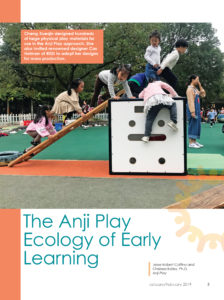The Anji Play Ecology of Early Learning


 by Jesse Robert Coffino and Chelsea Bailey, Ph.D., Anji Play
by Jesse Robert Coffino and Chelsea Bailey, Ph.D., Anji PlayWhile play seems a most natural activity for children, educators must innovate to incorporate “true play” that originates from the interests and direction of children themselves. The Anji Play approach is a model of innovative play-based education in China that is inspiring the world.
Anji County, a mostly rural area in eastern Zhejiang Province in the People’s Republic of China, is the birthplace of educator Cheng Xueqin, the creator of the Anji Play approach to early education. The approach is deeply resonant with western models of experiential learning; however, not having originated in the west, it also challenges many current assumptions about the capacity of the child and the teacher’s role. Anji Play specifies teacher practices, carefully designed materials and environments, technology use, and parent engagement. Currently, 126 public kindergartens in Anji County, serving 15,124 children ages 3-6, employ the approach, accounting for 98.5% of the county’s kindergarten age population. The smallest school serves two children; the largest serves over 700.